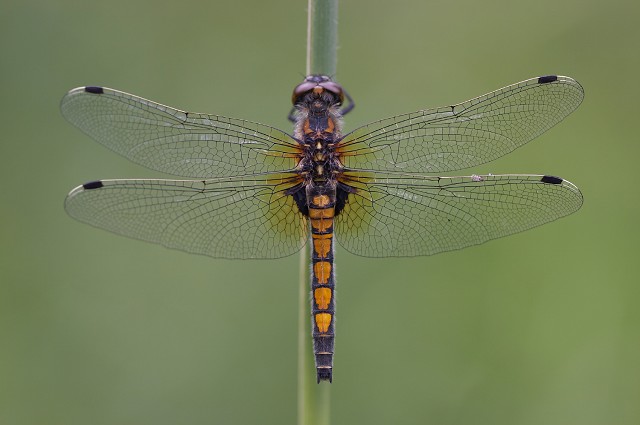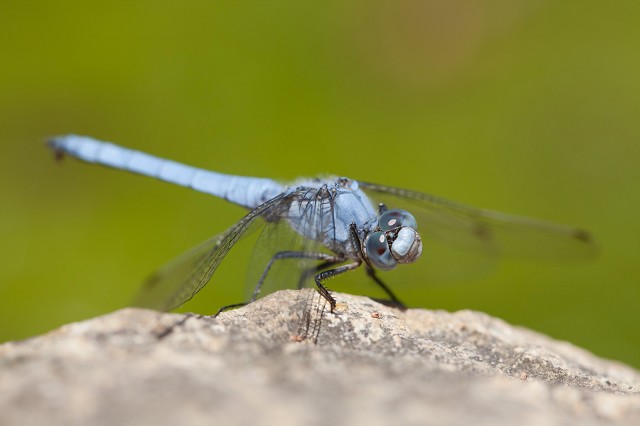Since 1995, no fewer than 11 species of dragonfly or damselfly have been recorded from Britain either for the first time ever, or again after a long period of absence.
Many of these have also bred successfully, some of which have gone on to become well-established residents. Small Red-eyed Damselfly, which in south-east England in 1999, can now be found breeding successfully as far west as Wales and north to North Yorkshire. Others on the list of new species are less familiar, with the stunning Large White-faced Darter (Leucorrhinia pectoralis) making its first ever appearance here in 2012.

Large White-faced Darter is one of 11 new dragonfly species to Britain since 1995 (Photo: Christophe Brochard)
These species account for around 20 per cent of the current UK dragonfly fauna, with a variety of factors underlying the long list of new British records. The increasing number and experience of local dragonfly watchers plays a role, greatly increasing the likelihood that rare occurrences are accurately reported. However, most new sightings are a reflection of the large-scale range expansions currently being exhibited by many European dragonfly species, almost certainly as a result of climate change.
With climatic trends still continuing, such changes are progressing apace, making it highly probable that further new species of dragonfly will appear in Britain over the next few years. Likely candidates for future British species include the beautiful Southern Skimmer (Orthetrum brunneum), with one individual already recorded from the Channel Islands in July 2001.

Southern Skimmer is one of several species likely to colonise Britain in the future (Photo: Christophe Brochard)
Genevieve Dalley, Conservation Officer for the British Dragonfly Society, said: "These unprecedented events currently happening in the dragonfly world are exciting but also act as a warning: the natural world is changing. Records given to us by dragonfly enthusiasts and citizen scientists are vital in providing the data we need to track these changes and try to understand why they are happening and what the consequences will be."
The British Dragonfly Society runs the Migrant Dragonfly Project, improving our understanding of dragonfly migration and the reasons for it. The Society also runs DragonflyWatch, Britain's dragonfly recording network. Adrian Parr, co-ordinator of the Migrant Dragonfly Project, explained: "now is a particularly interesting time to be involved in dragonfly recording, with the number of new species appearing in Britain soaring and changes also happening to the distributions of our own resident species. There's never been a better time to get involved."
To find out how to take part in Dragonfly Recording, visit: www.british-dragonflies.org.uk

